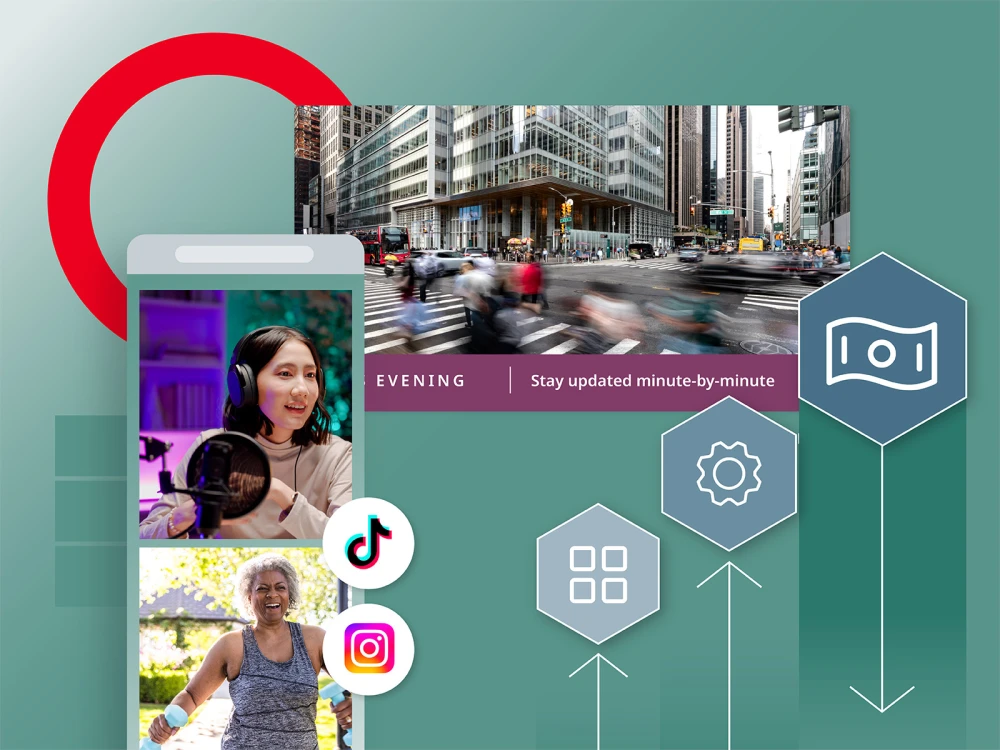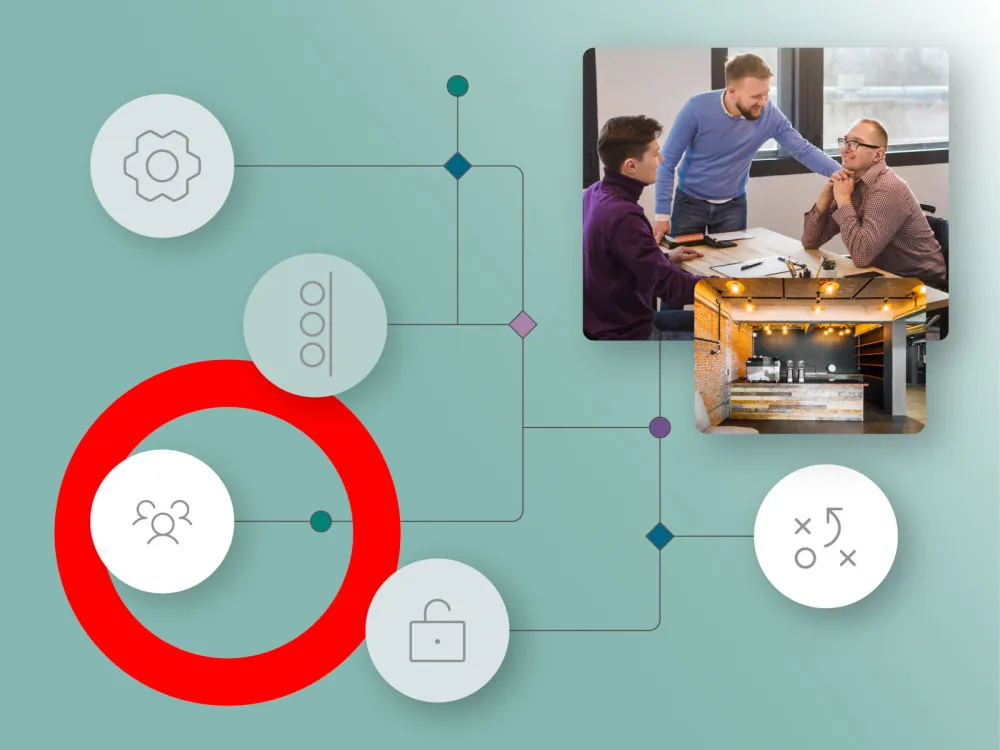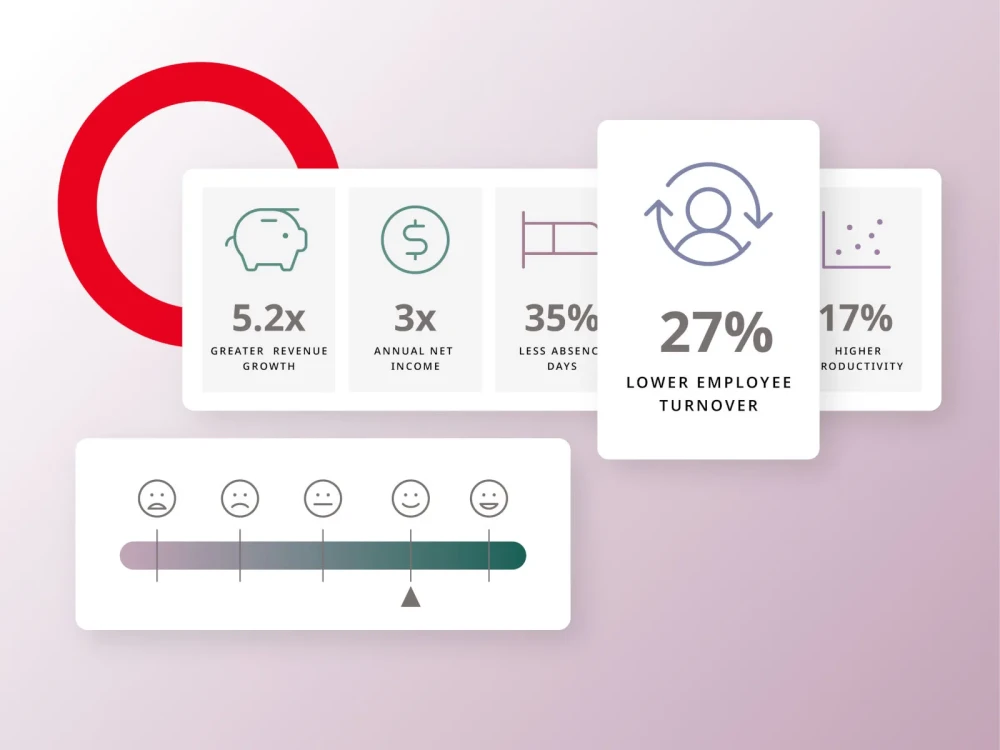There’s some debate around exactly what is meant by “digital transformation,“ which is a commonly used term right now. But ultimately, it really boils down to using technology to create new or improved processes and customer experiences to drive better business outcomes.
Content is key to achieving these outcomes, because as we all consume more and more media, we are making more buying decisions based on our experience of that media. And to create excellent content effectively means having the right CMS.
Choosing the right CMS gives organizations an opportunity to succeed with their digital transformation, plus the ability to create, manage and optimize the right customer experience to future-proof their digital transformation investments.
But which is the right CMS? Jon Rojas, Principal Product Manager at Brightspot, explains this when discussing digital transformation during a recent webinar.
A primary consideration from the outset, Jon emphasizes, is the need for speed of deployment and flexibility.
He says: “Being able to integrate with third-party systems will allow you to utilize existing tools, which can help you minimize the time spent architecting and developing solutions.”
That means, he explains, that a CMS like Brightspot, which offers integrations for everything from Apple News and MailChimp to online video platforms like YouTube and Vimeo, can be a huge helper for digital transformation initiatives.
In addition, a CMS that emphasizes a migration-friendly approach and supports developers to utilize tools to help ease the workflows around content migration will also add value to any digital transformation push.
“Let’s say you have multiple sites that you need to manage and create content for as part of a digital transformation change,” Jon explains. “These sites might be standalone sites, or on different platforms, and being able to bring them into one CMS instance can really help your efficiency and increase collaboration across your teams.”
Implement what makes the most sense for your business
In addition to a CMS that helps you get up and running quickly, one that aligns with your business logic is also a must for digital transformation.
This might appear self-apparent on first read, but let us explain.
At the highest level, digital transformation is the adoption and use of technology within an organization to create new or modified business processes and customer experience. This can mean very different things to organizations, as well as to the teams and even the individuals they comprise.
Brightspot is built to simplify the data-modeling process. With a data-abstraction layer that removes the need for developers to worry about designing the database architecture from scratch themselves, Brightspot delivers further flexibility in terms of flexing if the data model changes. So as and when your business logic changes, Brightspot is extensible to adapt to your changing business needs without requiring a rewrite of your underlying data model.
Then there’s Brightspot’s support for workflows, which also supports the drive toward more efficient digital transformations.
“Workflows can help align with your current processes or business themes so you’re able to build custom workflows quickly and align these with your team’s content creation process,” says Jon. “This can be particularly handy for automating content approval cycles,” he adds.
Summing up the ‘which CMS’ part of the webinar, Jon believes that organizations should always try to choose a CMS that provides ultimate flexibility in how their digital content is created. He says: “Implement what makes the most sense for your business.”
Against this backdrop, Jon observes some additional themes that he and his team are currently seeing around CMS and digital transformation.
The main ones, he says, are interest in machine learning and AI and their potential role in content and digital transformation, as well as privacy and an increasing interest in storytelling across multiple channels.
He explains: “In the past, you might create some type of story to tell on your website, and maybe your newsletter had a different story, as did your social and maybe your app. Now, we’re starting to see more cohesive stories and storytelling across all these channels.”
Don’t fixate on ‘the shiny new thing’
Digital transformation is an opportunity but also a struggle for many organizations. Based on his current and past experiences across various Brightspot engagements, Jon says it’s often down to not really knowing how to start a project properly. Planning is key.
He says: “During the planning process, establishing the expected outcomes and making sure that everybody agrees on these is vital. Then, digital transformation must be about implementing a solution and measuring it against those outcomes. That way, you’ll see things that might be working well, or not so well, and you can continually change things.”
He adds: “As long as you’re flexible and willing to continue iterating and measuring towards those outcomes, you can be successful.”
He also cautions about falling in love with the solution, and not focusing on the problem: “It’s very easy to get into the new shiny thing and new, different technologies that you can take advantage of—but it’s really important to always be able to tie everything back to the digital transformation outcomes you set during the planning process.”
As the need to transform digitally increases, businesses’ likely first question is, “Where do we begin?”
It will come as no surprise that people are spending ever-increasing amounts of time consuming media across digital channels — including smartphones, digital video, social media, TV and laptops. This underscores the fact that, with digital media on the rise, organizations and publishers are entering a new era of customer demand driven by digital transformation. And it’s not just media companies that must keep pace with these changing consumer needs; users across the spectrum, from B2B customers and online shoppers to employees of the biggest Fortune 500 corporations, want — indeed, expect — the best possible information and online experiences at their digital fingertips.
Today and into the future, the success of brands, businesses and organizations to transform digitally and meet ever-changing customer needs will depend on the efficiency with which they operate in order to enhance the content-publishing workflow and improve business performance.
Digital transformation is not a standalone instance — chief technology officers, information technology professionals and software engineers know that their business success depends on prioritizing efficient business processes and governance that will drive transformation towards a desired future state. At the heart of making this happen is choosing a content management system that following three key ingredients:
Digital transformation starts with an integration-ready and migration-friendly framework
The need to transform digitally has been a pressure organizations and publishers have faced for more than a decade in light of shifting consumer behavior and revenue performance. With the pandemic accelerating that need now more than ever, businesses’ likely first question is, “Where do we begin?”
In choosing a content management system that will future-proof the business to deliver content on the channels customers are now using, all content publishers — whether media companies, brand storytellers or corporate communications teams — need to first focus on the back end. This means starting with a CMS that is integration-ready and migration friendly.
Integrations and the ability to migrate existing systems moves businesses forward faster by utilizing tools and processes already in place. This avoids a complete rip-and-replace approach, while increasing efficiencies by bringing all existing systems and workflows into one unified content hub. Through being able to easily and deeply integrate additional third-party and proprietary systems into the publishing workflow, organizations can get started quicker and easier to achieve greater operational efficiency.
Digital transformation needs the capability to extend existing business logic
Once a publisher gets started successfully on their digital transformation journey through an integrated approach, they now need to ensure they can build their own business logic and workflows into their system.
Choosing a CMS that will adapt to a business’s specific needs and allow them to create their own workflows is the second critical piece when choosing a CMS to drive digital transformation.
Digital transformation needs the ability to support front-end flexibility
Once organizations and publishers have considered the first two critical decisions to choosing a CMS — getting started with a system that is integration and migration-friendly, and adopting a solution that acts as an extension of an existing business logic and workflow — the third factor that ties all of this together is considering a CMS that allows for front-end flexibility.
Having ultimate flexibility in how digital content is created and presented means increased operational efficiencies and stronger business performance — not to mention greater control for the respective digital publisher. This is done through the option of headless or hybrid CMS.
From work-from-home collaboration to e-commerce transactions, online experiences are the currency of the moment and the future. To connect with today’s customers across channels, media companies, publishers, brands and corporations will benefit from a content management system that doesn’t just work for now, but that is also built for the future. So, in order to meet the needs of today’s and tomorrow’s customers, a CMS needs these three ingredients to drive digital transformation:
- Allow organizations to get started managing their digital content business quickly
- Act as an extension of their existing business logic, workflows and content types
- Provide ultimate flexibility in how digital content is created and presented
Front-end flexibility alone won’t lead to long-term success — a CMS must provide the right functionalities on the back end that will drive transformation to solve unique business problems now and into the future.
With Brightspot’s modern architecture, publishers get more than the option of a decoupled, headless or hybrid approach to content management. Deep integrations and migrations, along with the ability to support an organization’s own business logic and existing workflow, means businesses are set up for success from the beginning.
Compared to a traditional or decoupled architecture, headless is known as one of the most flexible, developer-friendly CMS options. Still, there are considerations and questions to be addressed before adopting a headless approach.
- A headless-only approach is the best option for digital organizations with robust development teams who know their way around additional technologies required to establish the front end.
- With a headless architecture comes a lack of content presentation functionality, out-of-the-box templates and themes, meaning teams will need to source additional technologies to serve as the “head.”
- Through Brightspot, a hybrid approach is an option. This combines headless and decoupled architectures, allowing for a greater level of control over different experiences to a browser window or a device.
A headless CMS approach splits the work cleanly between the back and front ends. Ultimately, this means businesses can move quicker, and authors and developers can constantly optimize their own processes to determine what will deliver the greatest efficiency. The separation of content and presentation that allows these teams to work independently also accelerates time to market, leading to increased value for the customer.
With digital transformation being a continuous, iterative process, the other major benefit of a headless CMS is that it supports digital-media entities in future-proofing their businesses by making it easy to shift alongside technology as needs and expectations change. The flexibility of a headless architecture means organizations can support any new device or platform that they may need to in the future.








